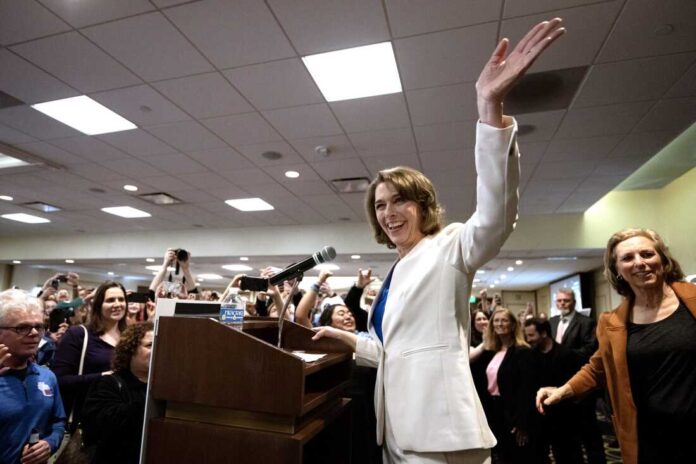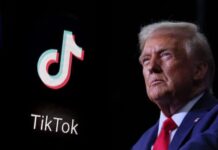The Wisconsin Supreme Court election has drawn national attention due to its potential to shape significant legal and political issues. With the state’s highest court balance hanging, the election saw record-breaking spending, high-profile endorsements, and a bitter fight between conservative and liberal candidates. The Wisconsin Supreme Court election polls were crucial in shaping campaign strategy and voter expectations during the election cycle.
The Wisconsin High Court Battle
Wisconsin Supreme Court election polls consistently reported a tightly contested fight between liberal contender Susan Crawford and conservative challenger Brad Schimel. The outcome was largely expected to determine the direction of critical issues, including abortion, redistricting bills, and public safety initiatives. Both candidates grew in intensity with the approach of Election Day as polls indicated a virtual tie.
An OnMessage Inc. poll taken in mid-March also had the race statistically deadlocked, with Schimel and Crawford both receiving 47% of the vote, with 5% undecided. This close margin accentuated the importance of turnout and eleventh-hour conversion efforts on the ultimate result.
Also read: Amarillo Faces Extreme Fire Risk as Strong Winds Hit Texas
Major Issues Driving Voter Sentiment
The Wisconsin Supreme Court election polls showed that abortion rights and public safety were among the most significant issues to the voters. Based on the poll figures, 37% of the voters made “fighting to uphold the rule of law” their top priority, while 20% made reducing crime and keeping the public safe their top priority. Schimel took advantage of this by emphasizing his background as a former state attorney general and enforcing a hard-on-crime policy.
Concurrently, Crawford’s campaign emphasized upholding reproductive rights. She argued that Schimel, who is a conservative legislator, would likely uphold Wisconsin’s 1849 anti-abortion law, and his position resonated well with many pro-choice voters. This divide transformed the race into a referendum not just on the ideology of judges but also on overall policy issues that matter to Wisconsin residents
Record-Breaking Campaign Spending
Wisconsin Supreme Court election polls reflected how financial contributions influenced public opinion. The election became the state’s most expensive judicial election with total spending running near $99 million.
Most of it was donated by high-profile givers. Tesla CEO Elon Musk, a vocal supporter of conservative causes, donated over $22 million in contributions that flowed through political action committees backing Schimel. His involvement was challenged by Democrats, who claimed Musk was attempting to buy influence on the courts.
Conversely, Susan Crawford was funded by billionaire philanthropist George Soros and former President Barack Obama. Soros invested $1 million with the Wisconsin Democratic Party, which in turn supported Crawford’s candidacy. These contributions locked in the national profile of the race, as both parties saw control of the court as a weapon for shaping state and federal courtroom wars.
The Election Outcome
After weeks of intensive campaigning, the voters of Wisconsin gave Susan Crawford a landslide election. According to the polls of the Wisconsin Supreme Court race, her surge during the final days saw her win by nine points over Schimel. The victory ensured that the court’s ideological split remained 4-3 in the liberal judges’ favor.
Also read: Lucid Gravity EV Deliveries 2025 Begin April 2025
The Crawford win will most probably have far-reaching consequences. Attorneys expect the Wisconsin Supreme Court to now rule on cases related to the state’s abortion law, potentially reversing the tight 1849 ban. The court will also probably address legislative redistricting, a move that can remake political influence within the state for decades.
National Implications of the Race
The election polls in the Wisconsin Supreme Court demonstrated something greater than a state-level judicial contest; they highlighted national political trends. With big players such as Musk and Soros at stake, the election reflected larger ongoing controversies concerning judicial independence, campaign finance, and court policymaking functions.
Moreover, the election was also regarded as a referendum on the political influence of ex-President Donald Trump, as Musk supported Schimel. The result revealed that, despite the power of law-and-order talk being still strong, Wisconsin voters were more interested in issues like abortion rights and an independent judiciary than party loyalty.
Conclusion
The Wisconsin Supreme Court election was one of the most important judicial elections in modern history. The Wisconsin Supreme Court race polls provided valuable data on campaign effectiveness, voter sentiment, and the impact of cash. Susan Crawford’s victory provides a liberal majority on the court, setting up historic legal rulings in the coming years. Because Wisconsin is a battleground state, the election reinforces the fact that the role played by the judiciary in shaping government and policy on the state as well as the federal level is essential.








